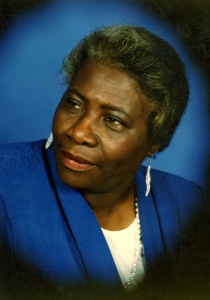Imagine working in a hospital and accidentally injecting someone with the wrong thing (a toxic antiseptic instead of a harmless dye). Over the next three weeks, as a result of your mistake, they slowly die. This was the fate of a “much loved mother-of-four”, Mary McClinton, in a Seattle hospital in 2004 when the two liquids were placed in identical, unmarked stainless steel cups and a syringe was filled with the wrong one.
Unlike the Mid Staffordshire scandal that we are hearing about, where hundreds of patients may have died needlessly, the Virginia Mason Hospital in Seattle decided to be open about its mistakes in an attempt to ensure they improved so the mistake, and others like it, did not happen again.
An article by Nick Allen explains how Dr Kaplan, the hospital’s chief executive, was impressed by Toyota’s use of ‘stop the line’ and transformed his hospital to reward people for raising mistakes so the hospital could improve. Importing various concepts from Toyota, Kaplan brought kaizen (continuous improvement), genba (managers walking the shop floor), and muda (identifying waste) to improve patients’ chances of survival.
Calling their new version of stop-the-line “Patient Safety Alerts”, the hospital encourages its 5,600 staff to report “anything that could potentially harm a patient” without fear of repercussions. It thanks its staff for owning up to errors and issues so that it can look at “how it happened and how you fix it.” The person who made the mistake is “consoled” rather than blamed.
Initially, people were reluctant to highlight mistakes made by them or their peers, raising objections such as “people are not cars”. But the death of Mary McClinton was the catalyst for widespread adoption of the Patient Safety Alerts system. In that instance, the hospital issued a public apology and took full responsibility for its actions. It said, “We just can’t say how appalled we are at ourselves. You can’t understand something you hide.”’
As Dr Henry Otero, an oncologist, says, it is important to realise that “it’s not about me, it’s about the patient. The process needs to stop me making a mistake. I need to be able to say, ‘I might be the reason, fix me’.” Cathie Furman, senior vice president of the hospital, says: “… in healthcare around the world the culture has been one of blame and hierarchy. And that makes it very difficult to find out what needs to be fixed. We’re safer because we’re finding out … you have to have an open and honest culture. You can put in a reporting system but you absolutely have to change the culture. That’s difficult and it doesn’t happen overnight.”
The staff at Virginia Mason hospital raise between 800 and 1,000 safety reports per month. But surely the hospital is increasing its risk to legal claims? According to Allen, since implementing Patient Safety Alerts, the hospital’s liability insurance premiums have reduced by 74% and potential complaints and lawsuits have fallen from about 100 a month to 25.
Apparently, Jeremy Hunt, the Health Secretary, is keen to implement a similar culture of honesty in UK hospitals.
I can’t do the article enough justice in this short post. I urge you to read the article in full.
For more information, you can also check out a report in The Seattle Times regarding the incident surrounding Mary McClinton and Charles Kenney’s book Transforming Health Care: Virginia Mason Medical Center’s Pursuit of the Perfect Patient Experience.

Quiero saber si ella era de Ohio.
Hace mucho que quiero saber de ella
Thanks Manuel. According to The Seattle Times she lived in Everett, Seattle (https://scrm.is/2KJWvxE)
Gracias Manuel. Según The Seattle Times, ella vivía en Everett, Seattle.